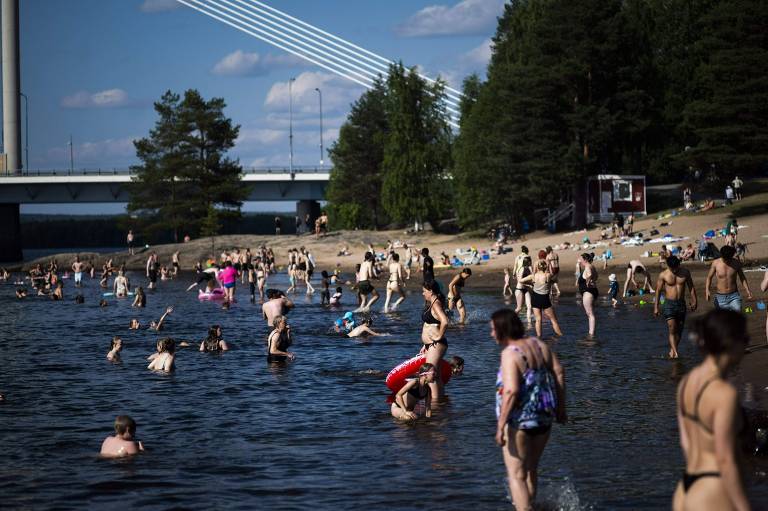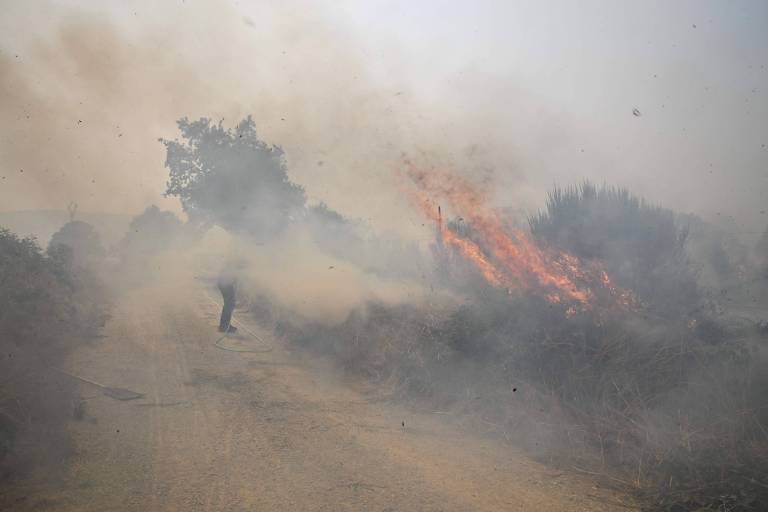Even Lapland, the land of Santa Claus, is suffering from a heat wave in Europe

The current heat waves in Europe haven't spared even Lapland , in northern Finland , the self-proclaimed land of Santa Claus. Two locations in the region recorded 26 consecutive days of temperatures above 25°C in July, a record; across Finland as a whole, there were 22 days above 30°C, another unprecedented feat. Exceptionalities intensified by the climate crisis caused by human activity, according to research released this Wednesday (13).
Analysis by WWA (World Weather Attribution), a panel of scientists investigating the responsibility of climate change in extreme events, shows that the heatwave observed in the second half of last month in Fino-Scandinavia, a geographic region that includes Norway , Sweden and Finland, was increased by 2°C by global warming.
"A similar event would have been statistically impossible in the pre-industrial era," says Clair Barnes, an Environmental Policy researcher at Imperial College London .

"Since we don't have all the data, from centuries ago, for example, we prefer to describe a more conservative scenario and say that similar waves are ten times more likely to occur now than when there were no fossil fuels," he says.
According to the WWA, the planet's temperature has already risen by 1.3°C, compared to the 1.1°C recorded in 2018, when the Nordic countries suffered their last major heat wave.
The increase of 0.2°C in eight years, according to climate models analyzed by scientists, doubled the probability of the region facing a prolonged heatwave.
"This shows how seemingly small increases in global temperature expose the population to more frequent periods of dangerous heat," says Erik Kjellström, professor of climatology at the Swedish Meteorological Institute.
"It's not true to say that heat waves are caused by the climate crisis; they've always existed. What we've found is that their frequency and temperatures are increasing due to global warming," explains the academic, one of the 24 authors of the rapid study, which is limited by its timeframe but provides scientific support for public debate while the problem is addressed.
"I've been in this field for over 30 years. What's happening now is exactly what we predicted and what we've been warning about for all these years."
If in July the heat was attracting attention in northern Europe , in August it is the south of the continent that faces record temperatures and forest fires.
A volunteer firefighter died in Spain, bringing the country's summer death toll to six. In Greece, thousands were evacuated in Patras. In France , the second major heatwave of the year has sent temperatures soaring to 43°C , leading politicians to debate air conditioning.
The total area burned on the continent this year is already 87% higher than last year, the hottest year on record . "Europe is in a unique situation. It's the part of the planet where the rate of warming is twice the global average," Barnes notes.
Also of concern are the so-called tropical nights, when temperatures remain above 20°C. "We had ten nights like that during the heat wave in the north, which is very unusual," says Kjellström.
Despite the name's appeal, the climatologist explains, tropical nights prevent body temperature from decreasing and allowing people to recover from the day's heat stress. This is especially problematic in cities and among older populations.
Another study led by Imperial College, published after the first heat wave in Europe in June, estimated a 65% increase in the number of deaths due to the climate crisis.

According to reports collected by the Swedish Red Cross, July was also a month of overcrowded hospitals in the region under analysis. Doctors and nurses reported difficult conditions in health facilities in the northernmost areas, which were prepared for intense cold, not heat.
Wildfires, including in Lapland, have driven reindeer and other animals into urban areas in search of food and water. Natural cycles have also been disrupted in the Baltic Sea, with reports of algae blooms.
For Friederike Otto , professor at the Grantham Institute of Climate Change and Environment at Imperial College, the heat wave in Scandinavian countries, with cold or subarctic climates, "should be seen as yet another reminder that no one is safe from climate change."
"In recent weeks, scorching temperatures have hit the US, Japan , andSouth Korea ; massive wildfires have raged in France and Turkey . The burning of oil, gas, and coal is killing people and intensifying extreme weather events. To prevent the climate from becoming even more dangerous, we need to switch to renewable energy," says the WWA co-founder.
uol





